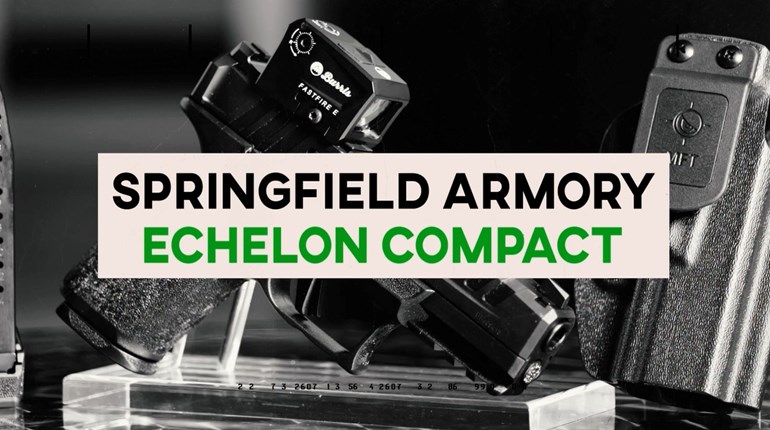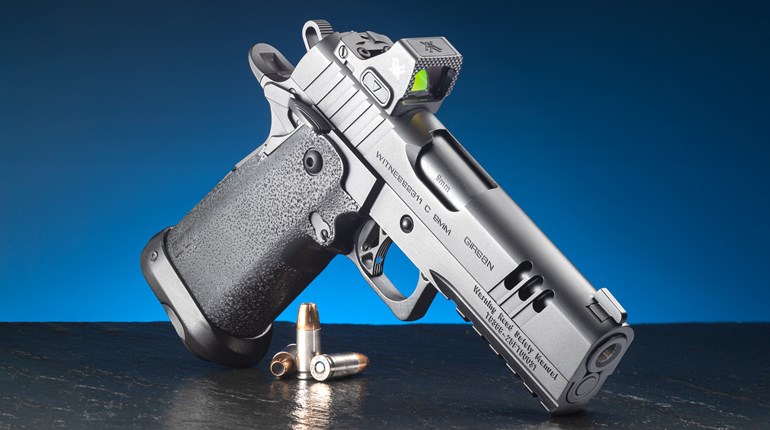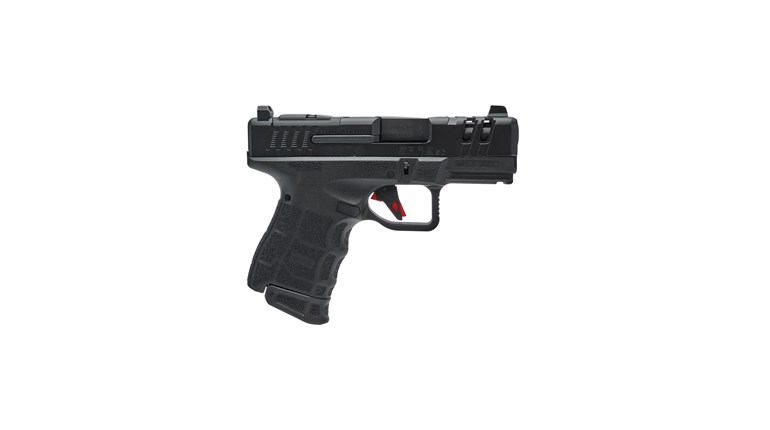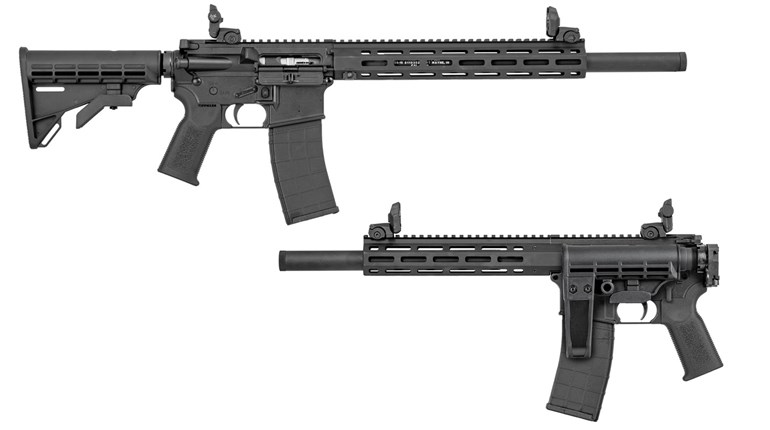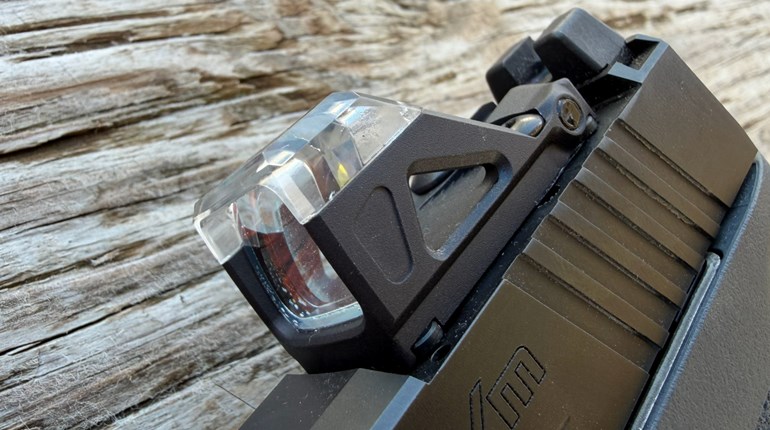
Let me state this up front: I’m a proud American. I love baseball and apple pie. If you cut me, I bleed red, white and blue. Whichever Detroit automaker you think is best, I think they are, too. And, therefore, I am a loyal fan of John Moses Browning’s M1911.
But, with that out of the way, it pains me to admit that the 1911 wasn’t Browning’s most important or influential pistol design. The 1911 is largely an American obsession, and when the rest of the world thinks about JMB’s martial handguns, the one that springs to mind is the Fabrique Nationale GP35, better known as the FN Hi Power.
Actually the result of a collaboration between Browning and his successor at FN, the great Dieudonné Saive, the Hi Power is one of the most prolific service pistols ever created, being used by the militaries of half a hundred countries.
Though it had some features that made it cheaper and easier to produce than the M1911, such as the fixed, under-barrel cam that replaced the swinging link on the older design, the Hi Power was still expensive to produce compared to newer designs. Even the change to a simpler external extractor in the 1960s wasn’t enough to keep it competitive, cost-wise, for budget-conscious militaries, and its double-stack, 13-round mag—a revelation in the 1930s—was by now commonplace.
Browning (an FN subsidiary) finally ended production a few years ago, but it turned out that demand for the Hi Power still existed.
EAA began selling a Turkish-made clone recently, and Springfield Armory upped the ante with the SA-35, which offered some minor tweaks to the original design.
Early this year, though, FN America went nuclear on the Hi Power market by offering the all-new, American-made High Power.
Note the spelling change, because this isn’t your granddad’s Hi Power.

It’s a struggle to find the proper analogy here, but let’s try this one: If the GP35 is Caesar Romero’s Joker from the original “Batman” television series, then Springfield’s SA-35 is like Jack Nicholson’s Joker. It’s true to the original, if a bit edgier and slightly but distinctly updated.
On that scale, FN America’s new pistol is Heath Ledger’s Joker: It’s a darker, grittier reboot, reimagining the whole concept in a new, and very serious, light.
If you were to take the new pistol from FN America and place it against a blank background, gather a few of your gun-nerd friends around and ask them what they thought they were looking at, they’d look at you like you had a screw loose. Those lines are unmistakable!
From the arched backstrap and the single fastening screw on the slightly wasp-waisted grip panels to the distinctive radii on the muzzle end of the slide and the keyhole cross-section looking from the wrong end of the barrel, this is quite obviously a Hi Power.
To use another analogy, it’s not until you set it beside the original that the differences become apparent. Seen by itself, a current Dodge Challenger Hellcat looks like a finely detailed copy of the original; the lines are all the same, right? But, park them side-by-side and the newer car is obviously a burlier, more serious variation on the same theme.
It’s the same with the new High Power. It’s not until it’s viewed next to the original that the differences become readily apparent.
For starters, when measuring from the bottom of the magazine floorplate to the top of the rear sight, the new pistol is a good half-inch taller than the old one.
This is explainable by the fact that FN wanted the grip to retain its svelte outside dimensions that made it accommodating for a wide range of hand sizes, but needed to find a way to increase the magazine capacity to a more modern 17 rounds, and those 17 cartridges have to fit somewhere, ergo the longer grip.
On the downside, this means that the magazines are not compatible with the classic Hi Power’s, and vice versa. On the upside, this juggling of the grip dimensions allowed them to correct one of the most glaring faults of the classic GP35, namely annoying and painful hammer bite.
The old Hi Power was a notorious devourer of the flesh on the web of the shooter’s hand. Even the replacement of the classic spurred hammer in commercial Hi Powers with a military GP35-type rowel hammer only mitigated this tendency.
As a result, a cottage industry of gifted pistolsmiths sprang up, able to weld up a protective beavertail on the frame of the Browning. With the new High Power, those talented hands will be idle, as there’s no hammer bite to cure. (I even tried to provoke some for science, with little success.)
Another dimension that’s enlarged is the overall length, by about a quarter of an inch. Since the barrel lengths are the same, that extra quarter inch is abaft the breechface, and is likely also a result of the slightly rearranged lockwork.
And while the overall width of the new pistol and its progenitor is pretty much a wash, the new High Power is noticeably heavier. FN America’s promotional materials say it’s 40 ounces, and the test sample clocked in on my postal scale at 38 ounces with an empty magazine inserted.
That’s just bare ounces shy of the maximum allowable weight for IDPA’s Enhanced Service Pistol division. Surely a coincidence. OK, maybe not.

The extra avoirdupois, more than a third of a pound over the original, absorbs recoil nicely. This a substantial, all-steel pistol and, like a classic Colt Government Model, the heft in the hand constantly reminds you of the fact. It feels a bit muzzle heavy and … Well, we’ll get back to that part when we get to the range.
Whereas the old Hi Power had a smooth frontstrap that was a challenge to add any texture to (too thin to checker easily, most pistolsmiths preferred to stipple them), the new High Power comes with a checkered frontstrap right out of the box. The backstrap is checkered to match. Unlike the original (but like the M1911) the checkered mainspring housing is a separate piece. This simplifies assembly and helps to hold costs down to a manageable level.
 While later Hi Powers offered ambidextrous safeties, the new High Power is completely ambidextrous in the fashion that is common to modern service pistols. Both the thumb safety and slide stop are fully mirrored on both sides of the pistol and reachable by the strong-side thumb of the shooter no matter which hand they’re using. Also, unlike the original, the maga-zine release, with its finely checkered round button, is reversible.
While later Hi Powers offered ambidextrous safeties, the new High Power is completely ambidextrous in the fashion that is common to modern service pistols. Both the thumb safety and slide stop are fully mirrored on both sides of the pistol and reachable by the strong-side thumb of the shooter no matter which hand they’re using. Also, unlike the original, the maga-zine release, with its finely checkered round button, is reversible.
Takedown for cleaning has been modernized, as well. Of course, first remove the magazine and triple-check that the gun is empty. Instead of having to remove and reinsert the slide stop like you’re LARPing the 1930s, it’s as simple as clearing the firearm, locking the slide back with the chamber empty and rotating a small lever on the right side of the frame down through 90 degrees. Controlling the slide against the recoil spring, you thumb the slide stop and guide it forward off the frame, like with a Beretta M9 or classic P-series SIG Sauer. No trigger pulling required. Reassembly is just as easy, but in reverse.
Up top, on the slide, the most noticeable difference is the ejection port. Rather than the smallish ovoid of the FNH original, the new High Power’s ejection port wraps across the top of the slide, allowing the barrel to achieve lockup via a squared edge atop the chamber, rather than the old internal radial locking lugs of the original, which were more machining intensive and often required final hand-fitting.
A keener observer will note that the new pistol has reverted back to the internal extractor of the original GP, rather than the external claw used on Hi Powers since the 1960s, and the cocking serrations are wider and more aggressive in texture.
Less apparent are the sight dovetails, which are the same dimensions as the ones on the FN 509 (which is to say they match the dovetails from a company that rhymes with “Big Tower,” rapidly becoming an industry standard.)
The curved trigger has a smooth, rounded face. It has a fairly short, light takeup before a rolling break that measured 4 pounds on the nose using my RCBS trigger scale.
The big question, of course, is “How does it shoot?”
The examples we got to try at the launch event all ran fantastically, but those were likely preproduction guns and we were using Federal American Eagle FMJ ammunition, which is quality stuff with a feed-friendly profile.
When the test sample arrived in my hands, a Flat Dark Earth specimen fresh off the production line, I wanted to see how it would do under slightly less laboratory-grade conditions, especially since this is essentially an all-new pistol evolved from a classic.
Therefore, I contacted my friends at Lucky Gunner with a rather unusual request:
“Hey, can I get 2,000 rounds of 9 mm? And I don’t mean two cases of FMJ, but a variety of ammo, no more than a couple boxes of each kind. Like everything from lightweight frangibles to 147-grain subsonics, and premium hollowpoints from domestic manufacturers to off-brand FMJ from some Central-Asian manufacturer I’ve never heard of.”
When the ammunition arrived, I gave the pistol a healthy dose of Lucas Extreme Duty Gun Oil and spent the next few weeks making daily range trips to burn it up, 100 or 200 rounds at a lick.
I am pleased to report that the pistol ate it all with aplomb, no matter how dirty it got. Whether nice, clean Federal Syntech or gnarly, steel-cased TulAmmo, the High Power chewed through it like a champ.
Accuracy was as good as any recent service pistol I’ve tested. Even just shooting off a range bag for a rest, I managed a few sub-3-inch groups at 25 yards. Steadier hands—or a Ransom Rest—would likely put up some pretty good numbers. I credit the trigger as well as the very usable iron sights.
Muzzle flip was negligible. Even with a less-than-Captains-of-Crush grip, the nose-heavy feel of the High Power manifests itself in the remarkably flat nature of the way it shoots. You need a compensator on a polymer pistol to see this little muzzle flip; the sights lift and settle extremely predictably.
The only issue over the entire test was when I replaced the textured plastic grip panels with some of the G10 ones (also sold by FN America.) The slightly thicker G10 grips hold onto the shooter’s hand so well that they try and unscrew from the frame without a dollop of thread locker to keep them in place. The thinner stocks didn’t exhibit this tendency.
FN America has very successfully re-booted the franchise with the new High Power, at least in this writer’s opinion. If you can carry a full-size 1911, you can tote a High Power and get twice the capacity in the same size and weight. If you’re a fan of very shootable single-action triggers in classic all-steel pistols, it’s certainly worth checking out.












